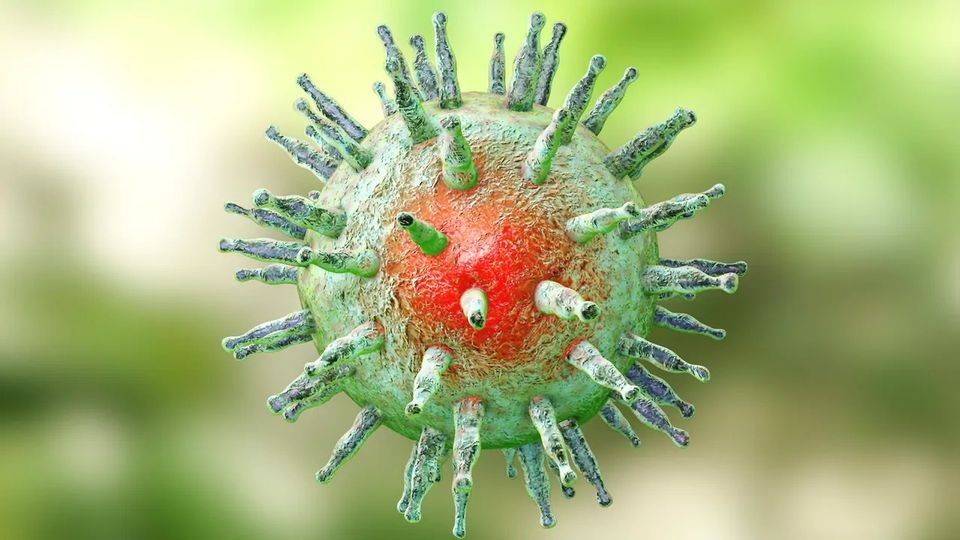The Invisible Kingdom is a book that chronicles Meghan O’Rourke’s struggle with an undiagnosed auto-immune disease. She describes the decade-long journey to get treatment for an autoimmune disorder that defied classification and, therefore, treatment. She finally tried a radical solution that is not recommended by the medical establishment, but it worked for her.
The one bright spot from the book was her belief that Long COVID would spark more research in autoimmune diseases. Because unlike most autoimmune disorders, Long COVID affects men and women equally. Traditionally, women are the primary sufferers of autoimmune diseases such as lupus, rheumatoid arthritis, fibromyalgia and multiple sclerosis (MS).
It looks like her prediction was correct, because each month I see a new article on Long Covid and new findings about autoimmune diseases.
In 2022, a landmark study in Science concluded that a previous EBV (Epstein-Barr Virus) infection is the primary source of MS. Someone who has contracted EBV has a 32 TIMES more likely chance of eventually suffering MS than someone who never contracted the disease. That is an overwhelming statistic. (Note: there are issues with this analysis, because a lot of it relies on correlational research which has a restriction in range and is not causal.) Despite these cautions, scientists believe that they are on the right track and are trying to identify how EBV causes MS in some, but not most of the people who are infected with EBV.
Scientists believe that the EBV inserts itself into Messenger RNA (mRNA). (We remember mRNA as the new technology for creating the COVID vaccine.) This is the first case where they have discovered that a hidden virus actually inserts its DNA into a normal cell’s RNA.
EPV infects an estimated 90%-95% of people by the time they reach adulthood. Most are infected as children. EBV also causes mononucleosis. Up until recently EBV was viewed as a relatively innocuous virus that remained in our body as many viruses do.
But recently EBV has been associated with some lymphomas and nasopharyngeal cancers, Type I diabetes, inflammatory bowel disease (IBD), celiac disease, lupus, chronic fatigue syndrome, and some types of arthritis.
Anecdotally, I have heard from three mothers of children with Type 1 diabetes who described their children getting very sick from a virus before being diagnosed with the disease. Now scientists are suggesting that the virus might be EBV.
MS is caused by the immune system attacking the protective myelin sheath. What scientists don’t know is under which conditions EBV could cause MS. One hypothesis is that the immune system mistakes the virus’s protein for a myelin protein and then attacks myelin. The second theory is that there is an ongoing, lifelong immunological response to EBV that continuously over time causes damage in the central nervous system myelin sheath. If the latter hypothesis is true, an antiviral treatment could help. Scientists know that the virus lies in the B cells, so some therapies are removing B cells. Although that puts the patient at significant risk for getting sick.
One of the approaches to help future generations is the development of an EBV vaccine. Several clinical trials are underway, but it will take time to determine whether a vaccine is effective at preventing MS and other associated diseases. In the United States, an estimated 50% of children are infected before 5 years of age. Recent studies suggest that early infection may be a predictor of MS.
In the past, scientists have had to rely on correlational data. But today, they are able to understand transcription, which is where the virus could be inserting itself. (Transcription is the process where the RNA copies half of the DNA strand.)
It is easy to get excited, I remember other treatments, such as interferon being a possible cure for cancer, only to discover that it had limited applications. But it is hopeful to imagine that some of these autoimmune diseases would become a thing of the past, thanks to science and our ability to understand the immunology of the human cell. With Crispr, a technology that allows scientists to insert corrected genetic structures in the proper sequence, and the rapid pace of immunology, these are exciting times.
Angela Rieck, a Caroline County native, received her PhD in Mathematical Psychology from the University of Maryland and worked as a scientist at Bell Labs, and other high-tech companies in New Jersey before retiring as a corporate executive. Angela and her dogs divide their time between St Michaels and Key West, Florida. Her daughter lives and works in New York City.



Write a Letter to the Editor on this Article
We encourage readers to offer their point of view on this article by submitting the following form. Editing is sometimes necessary and is done at the discretion of the editorial staff.